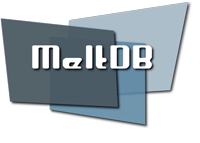Software
The huge amounts of data acquired from PolyOmics technologies can only be handled with intensive bioinformatics support that has to provide an adequate data management, efficient data analysis algorithms, and user-friendly software applications. The Bioinformatics Resource Facility (BRF) as part of the Technology Platform Bioinformatics at the Center for Biotechnology (CeBiTec) can look back on many years of expertise on the development of innovative bioinformatics software applications, in which design and implementation are driven by close collaborations with researchers of the center. Within many projects, experimental data are produced by the CeBiTec Technology Platform Genomics and it is therefore one of our major goals to simplify and automate the subsequent steps for a systematic data processing and analysis as far as possible. For the development of larger software platforms we follow the design principle to build specialized tools for separate scopes that can be interlinked to integrate the various data resources. Technically, we can rely on an extensive hardware infrastructure that provides all necessary storage and compute capacities.
Fusion
Fusion - PolyOmics data analysis, visualization and integration

Fusion is a web-based platform for the integrative analysis of omics data providing a collection of new and established tools and visualization methods to support researchers in exploring multi-level omics data.
QuPE
A rich internet application for the analysis of mass spectrometry-based quantitative proteomics experiments

In proteomics, tandem mass spectrometry (LC-MS/MS) in combination with isotopic labeling techniques provides a common way to obtain a direct insight into regulation at the protein level. The 'Rich Internet Application' QuPE provides comprehensive data management and analysis functions for these experiments.
MeltDB
A software platform for the Analysis and Integration of Data from Metabolomics Experiments
Metabolomics is a rapidly maturing field and expands the scope of functional genomics beyond microarray analysis and proteomics to the level of the metabolism. Compared to other 'omics', metabolomics is closest to the actual phenotype. The metabolome represents a vast number of compounds, estimations range from 2000 in human to 200.000 in plants.
EMMA2
A MAGE-compliant system for the collaborative analysis and integration of microarray data
As a high throughput technique, microarray experiments produce large data sets, consisting of measured data, laboratory protocols, and experimental settings. We have implemented the open source platform EMMA2 to store and analyze these data.




